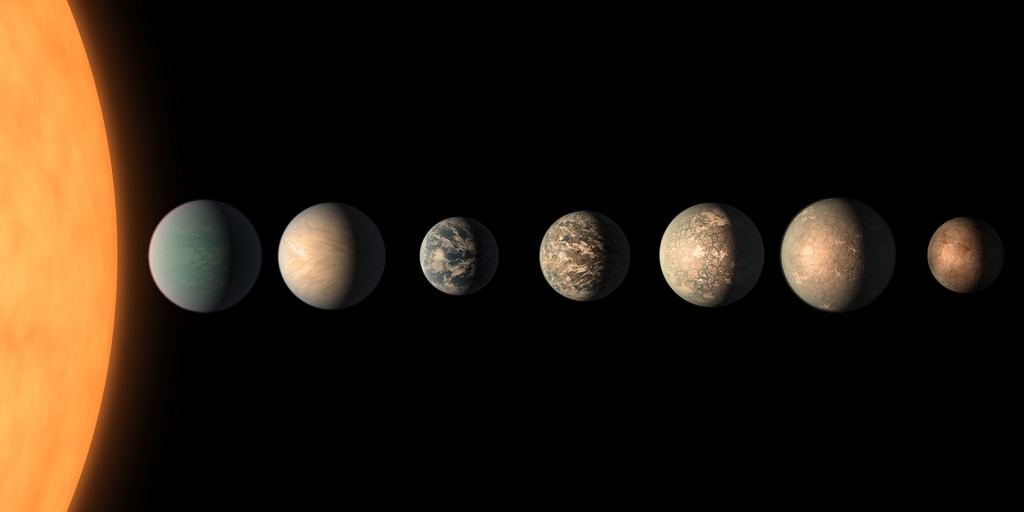Scientists claim that our ability to detect life on exoplanets using spectroscopy is still limited. It is still almost impossible to identify biomarkers with the help of existing equipment. In particular, this also applies to the TRAPPIST-1 system, in which there are seven Earth-like celestial bodies.

Why is it difficult to find life in another star
A group of scientists has published a study questioning our ability to find signs of life in other stars. Now the main way to do this is to search for biomarkers — traces of certain chemicals, such as oxygen or chlorophyll in the atmospheres of exoplanets.
For this purpose, a powerful telescope is directed at a star, near which there is an exoplanet, to which a spectrograph is attached, decomposing light into a spectrum. When a planet passes between the sun and us, the rays pass through its atmosphere and carry on the reflection of its chemical composition. And we see them as absorption lines.
However, other scientists doubt that it is so easy to count the spectrum at such a long distance and suggest instead looking for traces of alien technological activity, such as radio signals. The new study introduces a new element into this dispute, because according to it, modern telescopes have low power to confidently isolate the matter of interest in the atmosphere of an exoplanet.
Biomarkers at TRAPPIST-1 will have the opportunity to be found by a new generation of telescopes
The main problem is that the disturbance of the atmosphere and the interstellar medium create too much noise, in which biomarkers are lost. As researchers have calculated for modern telescopes, it is almost impossible to filter out noise.
It is necessary to use new tools with a mirror diameter significantly larger than 10 m. Perhaps it will even reach 50 or even 100 m. But it will also have to watch the stars for a large amount of time to separate biomarkers from noise.
As an example, scientists took the TRAPPIST-1 system. This is a red dwarf located at a distance of 40 light years from us. It is interesting because as many as seven Earth-like planets orbit it, four of which are in the habitable zone.
But even such an ideal goal will be difficult to determine life on it. Even in order to find one of the simplest biomarkers on it — oxygen, new-generation telescopes will have to observe hundreds of planetary transits against the background of a star. According to scientists, it can take from 16 to 55 years.
According to phys.org
Follow us on Twitter to get the most interesting space news in time
https://twitter.com/ust_magazine

